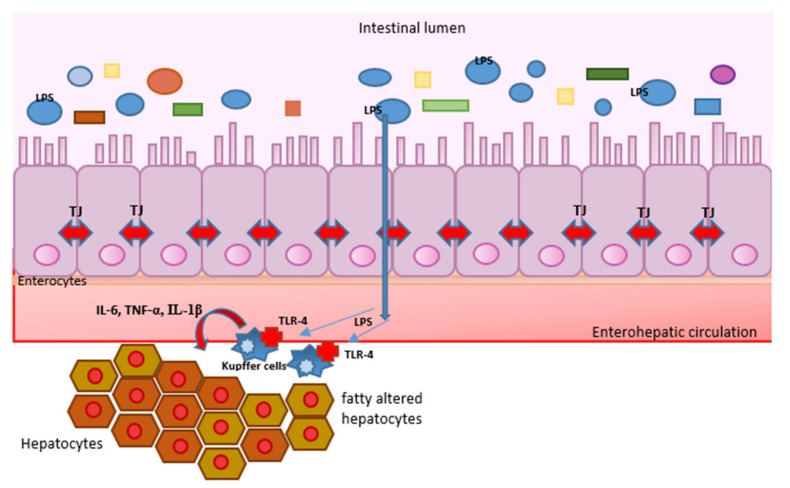Figure 4.
Cells which are involved in pathogenesis of alcoholic liver disease. In the intestinal lumen is the intestinal microbiota, the source of molecules which human organism recognizes as pathogen-associated molecular patterns (PAMPs). The role of lipopolysaccharide (LPS) of Gram-negative bacteria is best studied. It passes through damaged tight junctions (TJ) to the enterohepatic circulation, then to the liver, where it is recognized, among others, by Kupffer cells using Toll-like receptors class 4 (TLRs). In response to this stimulation, Kupffer cells secrete proinflammatory cytokines (IL-6, TNF-α, IL-1β) that lead to hepatocyte damage and the onset or progression of alcoholic liver disease.

